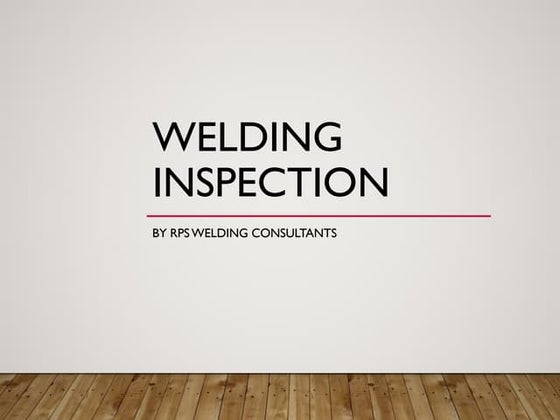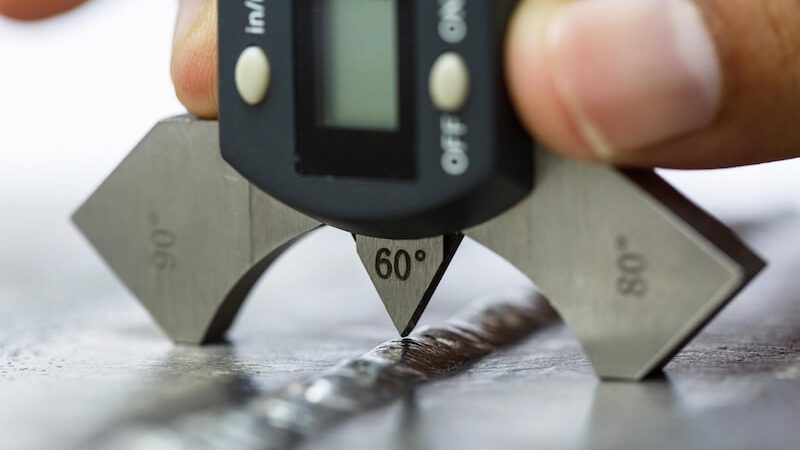Welding Inspection Demystified: Key Procedures, Tools, and the Crucial Duty They Play in Keeping High-Quality Welds
Welding inspection serves as a vital backbone in the guarantee of structural honesty and top quality in bonded joints, impacting numerous industries from construction to production. What are the crucial processes and devices that guarantee these criteria are supported?
Importance of Welding Assessment
Guaranteeing the honesty of bonded joints is critical in numerous industries, making the significance of welding evaluation undeniable. The top quality of welds directly affects the safety and security, efficiency, and longevity of frameworks and components. In industries such as construction, automobile, aerospace, and production, any failure in welded joints can lead to disastrous effects, including structural failures, tools malfunction, and loss of life.
Welding examination serves as an important quality control step, making certain that welds meet defined standards and regulative demands. It recognizes defects such as splits, porosity, and incomplete combination that might endanger the toughness of the weld. By identifying these issues early, welding assessment can protect against costly rework, delays, and possible safety and security risks.
Additionally, welding assessment cultivates compliance with industry requirements and accreditations, boosting the credibility of organizations and their products. It likewise supports continuous enhancement by giving valuable responses to welding employees, allowing them to refine their methods and processes.
Ultimately, the relevance of welding inspection can not be overemphasized; it is important for keeping premium welds, making certain security, and safeguarding investments throughout different markets.

Secret Assessment Processes
Effective welding evaluation counts on a collection of vital processes created to examine the quality and honesty of welds. These procedures include both non-destructive and aesthetic testing (NDT) methods, guaranteeing that any defects are identified before they endanger structural integrity.
The primary step in the examination process is an extensive visual examination, which allows assessors to examine welds for surface issues such as fractures, undercuts, and incomplete blend. Complying with visual checks, different NDT methods may be employed, consisting of ultrasonic testing, magnetic fragment screening, and radiographic testing. Each method uses distinct advantages; as an example, ultrasonic screening can find internal imperfections, while radiographic testing provides a permanent document of the weld's internal framework.
Additionally, it is critical to verify conformity with pertinent codes and standards, making certain that the weld satisfies industry specifications. This includes examining weld measurements and placement, as improper measurements can cause failings under lots.
Vital Devices for Examination
On a regular basis making use of the right tools is essential for achieving accurate welding evaluations. A detailed collection of evaluation devices assists make certain that welds meet stringent quality requirements and specifications.
One of the primary tools is the visual evaluation scale, which permits assessors to evaluate surface conditions, such as cleanliness and surface coating, directly. Furthermore, micrometers and calipers are essential for measuring weld dimensions and ensuring they satisfy needed tolerances.
For more comprehensive evaluations, ultrasonic screening (UT) devices is vital. This technique utilizes high-frequency acoustic waves to evaluate and spot interior problems material thickness. Magnetic bit testing (MT) and dye penetrant screening (PT) are important for identifying surface and near-surface defects, giving instant aesthetic indicators of potential issues.
Welders ought to additionally be furnished with firmness testers, which review the mechanical residential or commercial properties of the weld steel and base materials, guaranteeing they meet specific demands. Documenting searchings for with electronic assessment devices improves traceability and quality control. By utilizing these necessary tools, assessors can preserve top quality welds, inevitably adding to the safety and security and dependability of bonded structures.
Usual Flaws and Their Discovery
Welds, comparable to the backbone of structural honesty in construction and manufacturing, can show various flaws that endanger their performance and safety. Usual flaws consist of porosity, cracks, undercut, lack of combination, go to this website and slag inclusions (Welding Inspection Gilbert Arizona). Each of these flaws can manifest because of inappropriate welding strategies, poor product selection, or insufficient preparation

Detection of these issues can be attained with various non-destructive testing methods, consisting of visual assessment, ultrasonic testing, and radiographic testing. Each method plays an important function in determining these mistakes, ensuring that the integrity of the weld is kept and reducing the risk of failure in crucial applications.

Ideal Practices for Quality Control
Guaranteeing the helpful hints finest of welds is vital for structural integrity and safety and security, especially in sectors where the repercussions of failure can be severe. To attain this, a number of best techniques for high quality assurance must be implemented throughout the welding procedure.
First, a robust welding treatment specification (WPS) must be established, describing the needed parameters for each and every welding operation. This makes sure consistency and adherence to industry requirements. Second, comprehensive training and qualification of welders are vital; experienced employees are better furnished to produce premium welds and identify potential issues.
Routine examinations ought to be incorporated right into the welding process, using both non-destructive and visual screening (NDT) approaches to discover imperfections early. Regular calibration of assessment devices is vital to preserve precision. Furthermore, recording all welding activities, including examinations and corrective actions, produces a traceable record that can be invaluable for quality assurance.
Verdict
In final thought, welding evaluation works as a vital device for making certain the honesty and reliability of welded joints throughout sectors - Welding Inspection Gilbert Arizona. Via the implementation of essential evaluation processes and the application of important tools, organizations can efficiently determine and deal with possible defects. Adherence to best methods in quality control not only boosts safety but additionally guarantees conformity with market requirements, eventually contributing to the longevity and efficiency of frameworks and elements
Welding inspection offers as a crucial backbone in the assurance of architectural stability and high quality in welded joints, impacting numerous markets from building and construction to production.Making sure the integrity of bonded joints is paramount in different markets, making the relevance of welding evaluation indisputable.Welding examination offers as an important high quality control step, guaranteeing that welds satisfy specified criteria and governing demands. By employing these crucial tools, inspectors can keep premium welds, ultimately adding to the safety and integrity of welded structures.
In verdict, welding assessment her comment is here offers as an essential system for ensuring the integrity and integrity of welded joints throughout industries.